This month we provide an update on the Hôpital de la Miséricorde and analyze controversial plans by Hydro-Québec to integrate an electricity substation into the haunted site. The ghost-ridden Hôpital de la Miséricorde has been empty for years and is starting to crumble. Located on prime real estate in Downtown Montreal...
Welcome to the thirteenth installment of the Haunted Montreal Blog! Released on the 13th of every month, the May 2016 edition focuses on research we are carrying out into the famous Théâtre du Nouveau Monde. The theatre has changed hands and names many times over the years, but persistent rumours suggest the theatre has more than one ghost haunting the establishment.
HAUNTED RESEARCH
The Théâtre du Nouveau Monde is one of Quebec’s most famous theatres and is a star attraction in the Quartier des Spectacles, Montreal’s new Entertainment District. Located on the bustling corner of Sainte-Catherine Street and Saint Urbain streets, today the theatre offers both classical and contemporary theatre in the French language and is widely regarded as one of the most popular and professional theatres in Quebec. The theatre also has a long history of haunted activity.
Originally called the Gayety Theatre when it was constructed in 1912, the building was designed by architects Ross and MacFarlane. The theatre had been built by Canadian Theatres Ltd., a company which also owned the popular Orpheum Theatre, and was served by Columbia Amusement Company. This American company had 40 burlesque troupes in circulation to ensure theatres could host a wide variety of performances. The Gayety Theatre enjoyed financial and critical success until the Stock Market Crash of 1929, and subsequent Great Depression.
In 1930, The Gayety was renamed Théâtre des Arts and began offering French shows. When this plan failed, in 1932 it was renamed The Mayfair and began screening American movies. Again, the business model proved a failure after several years.
Finally, with the economy improving, in 1941 The Mayfair was reborn once more as The Gayety. As a nod to the good old days, the popular burlesque shows resumed, this time with even more bare skin than before. Indeed, by adding stripteasers into the mix, the theatre could guarantee excellent box office returns.
The most popular burlesque star during the 1940s and 50s was Lili St. Cyr. Bold, blonde and busty, her salacious performances quickly became the talk of the town. On some nights she could be seen taking a bath on stage or doing the reverse strip, whereas on others she performed the “Flying G”, whereby her G-string, which was hooked to a fishing line, would fly off into the balcony as the lights dimmed.
She was soon the most infamous burlesque queen in Montreal, casing much consternation among Quebec’s Catholic clergy.
Concerning Lili St. Cyr and her ‘numbers’, the Catholic diocese of Quebec seethed that “the theater is made to stink with the foul odor of sexual frenzy.” The Comité de Moralité Publique, also known as the “Morality Squad”, was called in to investigate. Led by zealous lawyers Jean Drapeau and Pacifique (Pax) Plante and other uptight citizens, the goal of the Morality Squad was to clean up the Red Light District, in which the Gayety Theatre was located.
St. Cyr was arrested and charged with “immoral, obscene and indecent” behavior. Following a well-publicized trial, she was acquitted of all charges. However that didn’t stop the wrath of the public authorities: in 1953, they went on to close down the Gayety Theatre once and for all.
That same year the theatre was sold to actors Jean Grimaldi and Michael Custom, who produced Québecois burlesque at the time. The theatre was again renamed, this time as Radio City. Only three years later, in 1956, it folded.
The theatre didn’t sit empty for long. It was bought by actor Gratien Gélinas, who renamed it La Comédie Canadienne, and began offering French theatre and music. This proved to be a popular past time and kept the theatre full of spectators for over a decade.
Meanwhile, the Théâtre du Nouveau Monde had been founded in 1951 as an itinerant company when it launched a production of the classic play L’Avare (The Miser) by Molière. Overseen by artistic director Jean Gascon and located at the Gesù from 1951–1958, it subsequently moved to the Orpheum. In 1966, the Théâtre du Nouveau Monde transferred to the Théâtre Port-Royal (today Théâtre Jean Duceppe) at Place des Arts and remained there until 1972.
In 1972, the Théâtre du Nouveau Monde acquired La Comédie Canadienne and took over the building. It has been known as the Théâtre du Nouveau Monde ever since and has produced many award-winning plays, all in the French language. However, despite the popularity of the Théâtre du Nouveau Monde, the building is reputed to be haunted.
In the book Maisons Hantées (translation: “Haunted Houses”) author and researcher Danielle Goyette describes some of the hauntings at the Théâtre du Nouveau Monde in a story called “La Vielle Dame du F106” (translation: “The Old Lady of Seat F106”).
The theatre has many mysteries and is said to be haunted by several ghosts. Strange, unaccountable noises, including mysterious creaks and phantom footsteps, can sometimes be heard echoing throughout the theatre. There are also tales of people feeling suddenly terrified when descending into the basement or standing on the stage. There is talk that the fear is caused by a dreaded, unseen presence that unnerves even the strongest-willed people.
In one instance, an anonymous box office employee recalled a story that happened to the theatre manager in 1984 or 1985. One late evening, after midnight, the manager was doing the final rounds before heading home. While closing up the theatre, he entered the audience area for a final inspection. He was surprised to see an old woman wearing a distinct hat a small flower attached to it, sitting all alone in the theatre, in seat F106. Their eyes met and the woman smiled at him, but in the next instant, she was gone, having suddenly vanished. It happened so quickly that the manager did not have time to feel scared. Scarcely believing his eyes, the weird incident got him thinking about the mysterious seat, F106, where the woman had apparently been sitting moments before.
The manager recalled that seat F106 was defective: it was always in the downward position and could never be raised, despite several attempts to repair it. When the story began making the rounds, staff members speculated that the ghost of the old lady might be one of the theatre’s former patrons who had returned in a paranormal afterlife to continue enjoying the shows. The belief was that the seat could never be raised because the spirit of the elderly woman was sitting on it. Others suggested that the ghost haunting seat F106 might be an elderly woman who once lived in a home at the site where the theatre was now located. Whatever the case, in 1997 the theatre was completely renovated by architect Dan S. Hanganu, including the seats in the audience. Seat F106 does not exist anymore, raising questions about whether or not the ghost of the old lady still haunts the theatre.
Other mysteries at the Théâtre du Nouveau Monde are related to the stage lights, which at times seem to have a life of their own. There are stories of the stage lamps turning themselves on and off over the old sound booth, even when they were disconnected from the electricity grid.
In another incident, a guide named Dominique Durand was leading a group of students on a field trip through the theatre. They had just arrived on the stage area and Dominique began to point out the ghost light hanging above the stage. The guide explained that most theatres have a ghost light, or a dimly-lit bare bulb hanging above the stage. Pointing upwards, he explained that ghost lights are always left on when the theatre is not in use to prevent accidents by ensuring people can see. He also told them the tradition started as a superstition from the days of Shakespeare, when a candle was lit to keeps ghosts away from cursing the performances.
As Dominique spoke to the group, a student jokingly flipped the off switch of the ghost light, plunging them into darkness. Dominique Durand panicked and flipped it back on, but the damage was already done. The following day, the guide learned that at the exact same moment the ghost light went out, an actor in the performance had an accident while working on his roof. Thespian Serge Postigo lost his footing and fell off the roof, seriously injuring his hand, which put the performance at risk. Luckily, despite needing to do some acrobatics in the show, the actor was able to continue playing by being very prudent.
From that time onwards, the ghost lamp has been known occasionally to turn itself on and off, joining the numerous other stage lamps in the theatre that seem to have a life of their own. There are also elevators in the theatre that sometimes move up and down on their own accord, and some staff members have occasionally reported hearing what has been described as “strange music”, despite the sound system being turned off.
On another occasion, a manager whose office was in the basement was closing up for the night. He had felt an unseen presence when alone before, but on this particular evening the presence felt stronger. At first he thought it might be another employee playing a joke on him, but he soon confirmed that he was alone in the building. As the hairs began to rise on the back of his neck, he became more and more afraid. Overwhelmed with building feeling of terror, he bolted from the theatre, leaving the door unlocked, and ran home as fast as he could.
Nobody at the Théâtre du Nouveau Monde has any solid explanation for any of these bizarre happenings. Indeed, the sheer number of paranormal activities in the theatre suggests that it is very haunted.
Who are the ghosts that haunt the Théâtre du Nouveau Monde? Former guide Dominique Durand speculated that maybe one of the ghosts was born from an old manager who never left the theatre. Others believe a deceased, nostalgic actor returns to haunt the boards, unable to stay away from the theatre he loved in life. There is also the speculation about the old lady haunting seat F106 being a former theatre patron or wealthy resident in a home on the site before the theatre was built. There are also rumours that the ghost of famous stripteaseuse Lili St. Cyr haunts the theatre, although these have been discounted by author Danielle Goyette because St. Cyr died in 1999, long after the hauntings began.
One final theory is related to Claude Gauvreau, the only poet to participate in Quebec’s radical Refus Global manifesto in the late 1940s. Despite being an accomplished artist, Gauvreau was known to be emotionally fragile. He was often institutionalized at Saint-Jean-de-Dieu, a Montreal psychiatric hospital. In 1971, shortly before his play Les Oranges sont Vertes was due to open at the Théâtre du Nouveau Monde, Gauvreau died mysteriously one night after falling off his roof. While some people speculated that he had committed suicide, the coroner ruled that his death was accidental. There is some speculation that his spirit may have returned to attend the opening performance of his play and that, following the show, he never left the building.
Whatever the case, if one accepts these stories, the Théâtre du Nouveau Monde would appear to be haunted by more than one ghost. Who these spirits are and why they haunt the old theatre are questions that still remain unanswered. Perhaps only with time and more paranormal encounters will more light be shed on this mystery.
COMPANY NEWS
On Sunday, May 8, Haunted Montreal conducted a Jane’s Walk called “Haunted Red Light District“.
A big thank you to the guests who attended this walk, which is in development for the 2016 Hallowe’en Season!
Haunted Montreal has been busy planning its 2016 public season of ghost tours. We are pleased to announce that all public tours will now be offered in both English and French! This year both Haunted Griffintown and Haunted Mountain will be offered in both languages, alternating on Friday nights, starting in June. All English performances begin at 8:30 p.m.
Friday, June 3 Haunted Griffintown
Friday, June 10 Haunted Mountain
Friday, June 17 Haunted Griffintown
Friday, June 24 Haunted Mountain
Friday, July 1 Haunted Griffintown
Friday, July 8 Haunted Mountain
Friday, July 15 Haunted Griffintown
Friday, July 22 Haunted Mountain
Friday, July 29 Haunted Griffintown
Friday, August 5 Haunted Mountain
Friday, August 12 Haunted Griffintown
Friday, August 19 Haunted Mountain
Friday, August 26 Haunted Griffintown
Friday, September 2 Haunted Mountain
Friday, September 9 Haunted Griffintown
Friday, September 15 Haunted Mountain
Friday, September 23 Haunted Griffintown
Friday, September 30 Haunted Mountain
Friday, October 7 Haunted Griffintown
Tickets can be booked in the 2016 Tours section.
Haunted Downtown is currently being revised before translation, but is still available for private tours for groups of 10 or more people (in English only, for the moment). Haunted Griffintown and Haunted Mountain are also available for private bookings, in both English or French, subject to availability.
Finally, we invite clients who attended a ghost walk to write a review on our Tripadvisor page, something that is very helpful for Haunted Montreal in promoting its tours.
For those reading the blog who want to receive a new Montreal ghost story on the 13th of every month and stay updated, please sign up to our mailing list.
Coming up on June 13: Notman House
The Notman House is a handsome, limestone mansion on the corner of Sherbrooke and Clark Streets. Originally constructed in 1845 for Sir William Collis Meredith by famous architect John Wells, the building has changed hands and vocations many times over the decades. It has served as a home for the city’s wealthy elite, including famous photographer William Notman, a religious hospital for those deemed “incurable”, a home for elderly women, a location for film shoots and, most recently, a “dream home” for tech start up companies. It is also rumoured to be haunted and in the June edition, the Haunted Montreal Blog features a first-person account of an uncanny encounter in the building that happened in the autumn of 2002. A man named André was working as a security guard in the Notman House, then abandoned, during a film shoot of “Wicker Park”. One night, when alone in the house, he heard the sound of uncanny, disembodied footsteps walking towards him in the passageway from the old hospital. What happened next was so unsettling that André is still seeking answers to this very day.

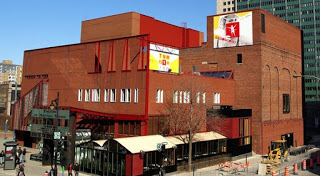
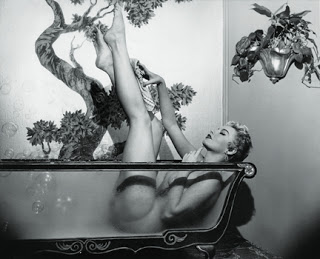
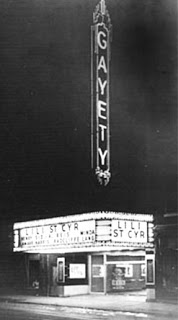
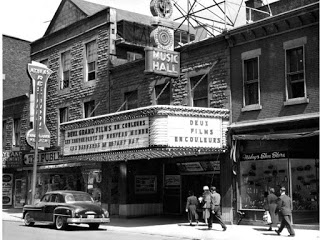
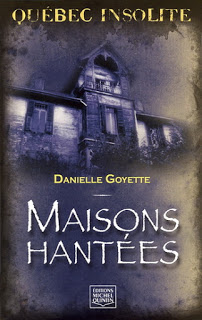



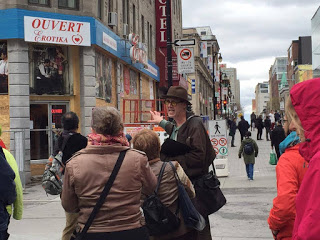




Comments (0)